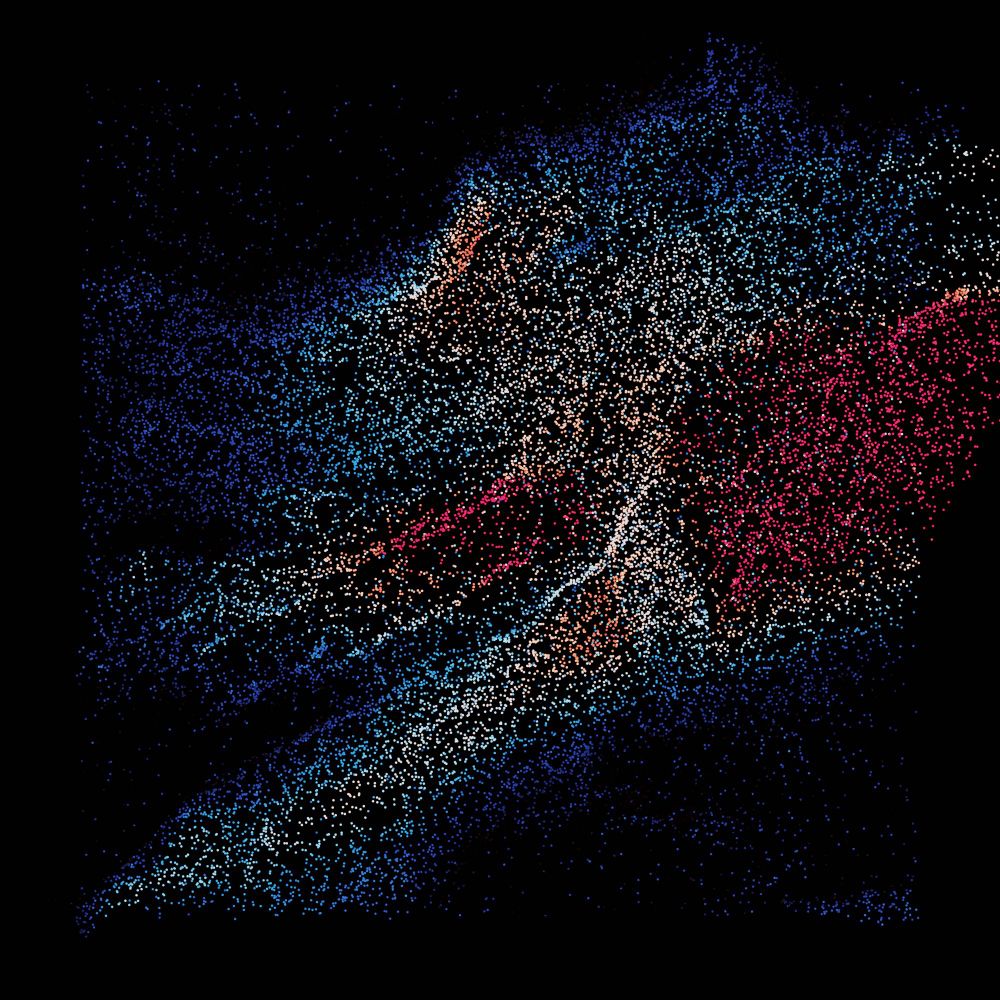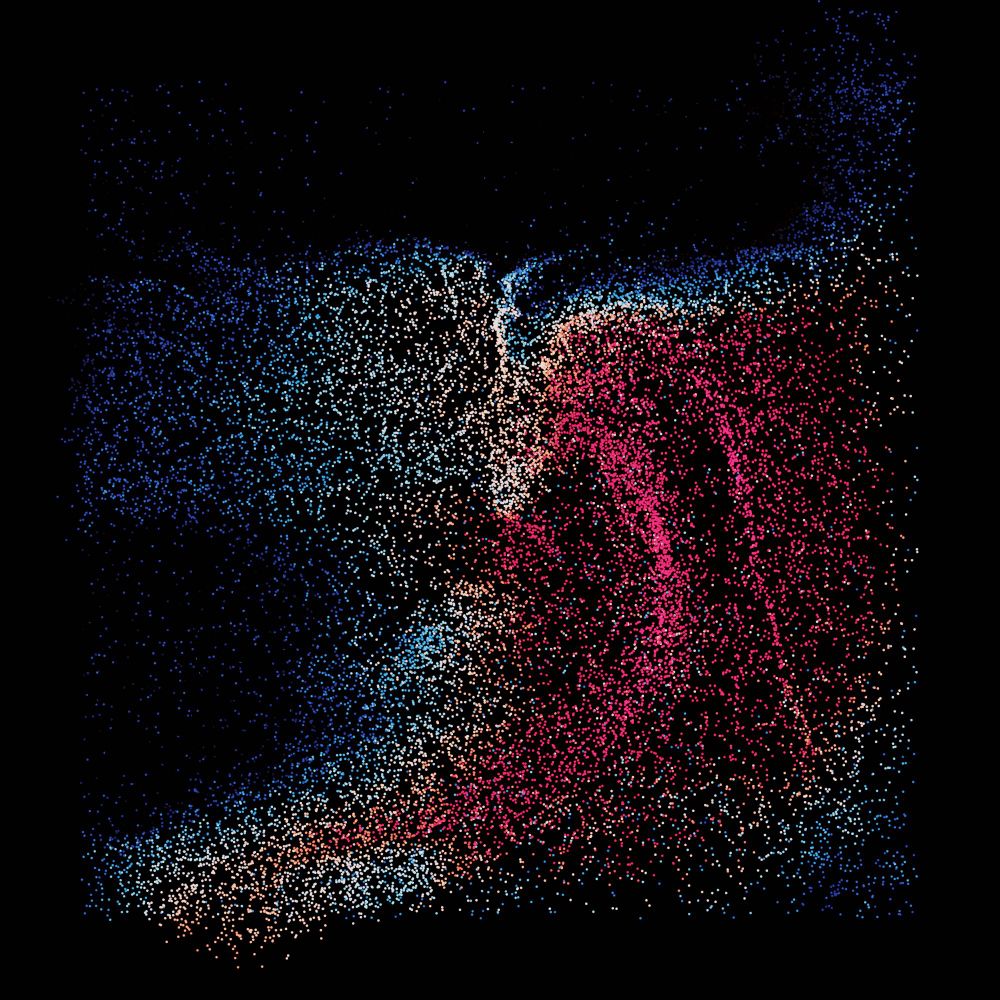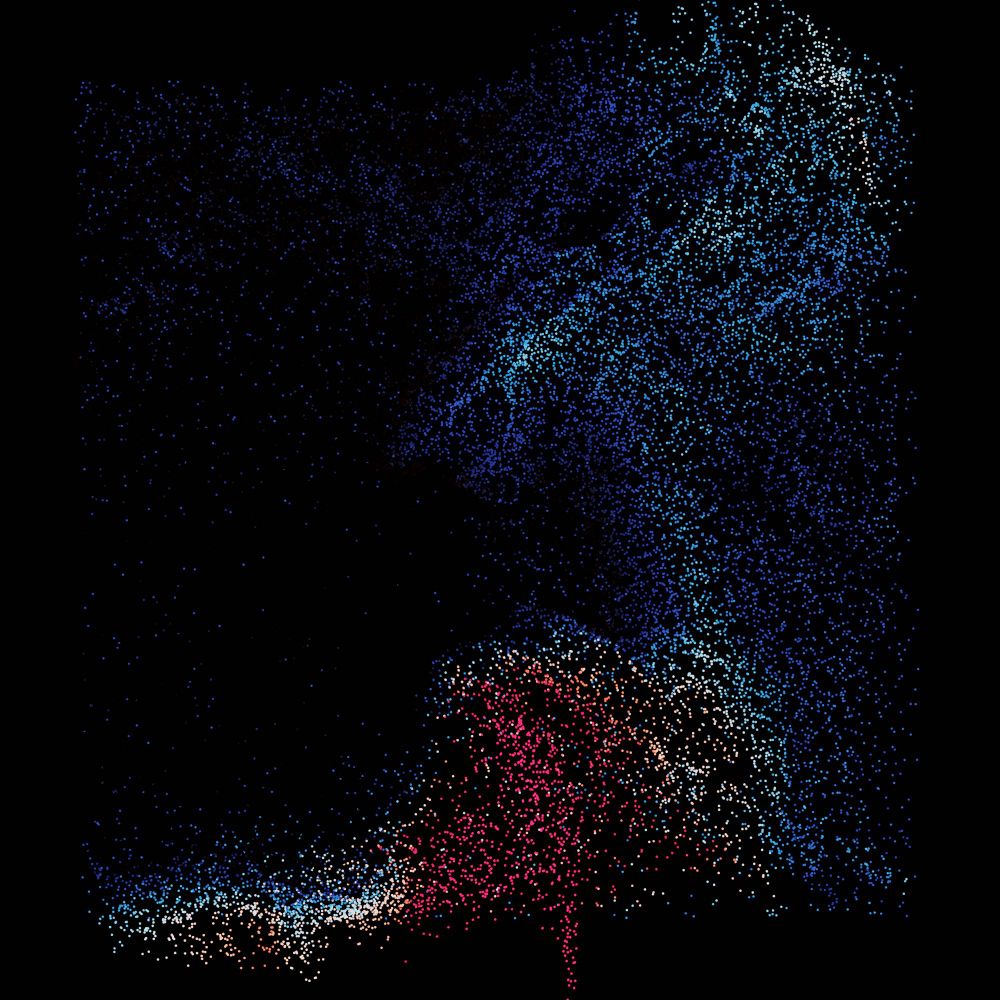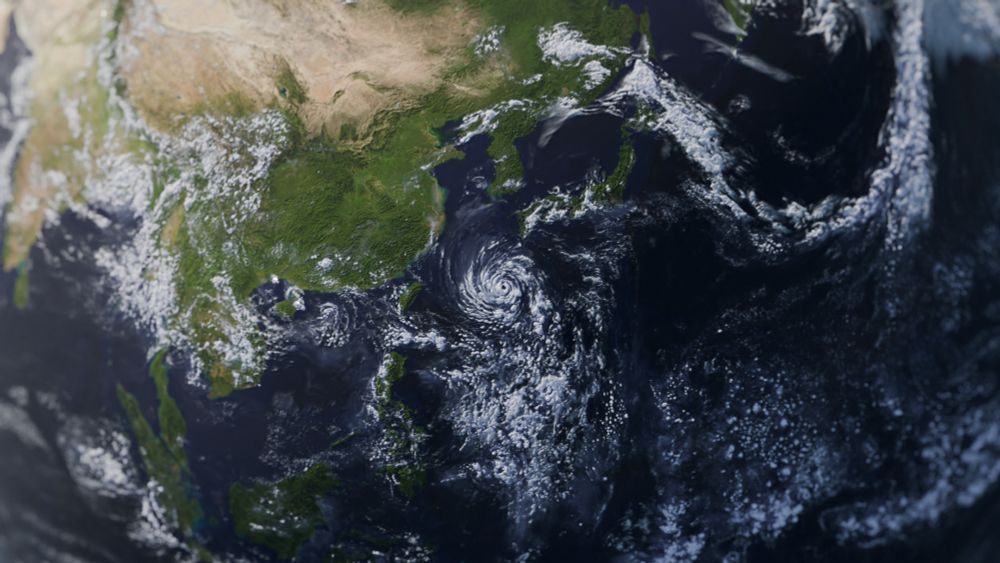s fesom na glavi
November 13, 2023 at 8:29 AM
s fesom na glavi
The 'breathing' of the Arctic. The change in sea ice extent and thickness from a FESOM model simulation created by Sophie Stolzenberger from the @GROCE79N project. Let's hope the 2019 sea ice extent doesn't break the record low of 2012.
November 7, 2024 at 3:03 PM
The 'breathing' of the Arctic. The change in sea ice extent and thickness from a FESOM model simulation created by Sophie Stolzenberger from the @GROCE79N project. Let's hope the 2019 sea ice extent doesn't break the record low of 2012.
However, the AI-based models tend to #drift towards known conditions from the training data set, as seen in this "hairy plot" of global-mean 2m temperature. Individual hairs are daily forecasts from 12:00 UTC. The future state is from IFS-FESOM in the H2020 project nextGEMS nextgems-h2020.eu
(4/7)
(4/7)

December 2, 2024 at 9:31 AM
However, the AI-based models tend to #drift towards known conditions from the training data set, as seen in this "hairy plot" of global-mean 2m temperature. Individual hairs are daily forecasts from 12:00 UTC. The future state is from IFS-FESOM in the H2020 project nextGEMS nextgems-h2020.eu
(4/7)
(4/7)
Exploring ways to visualise wind together with my colleague @sbeyer.net at AWI. Here’s a glimpse: IFS-FESOM wind speed visualised as coloured particles.



April 5, 2025 at 7:37 PM
Exploring ways to visualise wind together with my colleague @sbeyer.net at AWI. Here’s a glimpse: IFS-FESOM wind speed visualised as coloured particles.
Sophie researches how melt water influences the ocean circulation. And also how model resolution effects the results. Using the unstructured grid with FESOM allows finer resolution around Greenland while still running at a global scale

November 7, 2024 at 3:25 PM
Sophie researches how melt water influences the ocean circulation. And also how model resolution effects the results. Using the unstructured grid with FESOM allows finer resolution around Greenland while still running at a global scale
November 29, 2024 at 8:19 AM
Earth’s surface painted with 2m temperature. 🧪
Contrasts in temperature between the ocean and land, as well as between different orographic features, allow you to clearly see surface details.
Model: IFS-FESOM | Shown: 2m temperature | Project: nextGEMS| Simulations @trackow.bsky.social
#SciArt
Contrasts in temperature between the ocean and land, as well as between different orographic features, allow you to clearly see surface details.
Model: IFS-FESOM | Shown: 2m temperature | Project: nextGEMS| Simulations @trackow.bsky.social
#SciArt

December 3, 2024 at 8:36 AM
Earth’s surface painted with 2m temperature. 🧪
Contrasts in temperature between the ocean and land, as well as between different orographic features, allow you to clearly see surface details.
Model: IFS-FESOM | Shown: 2m temperature | Project: nextGEMS| Simulations @trackow.bsky.social
#SciArt
Contrasts in temperature between the ocean and land, as well as between different orographic features, allow you to clearly see surface details.
Model: IFS-FESOM | Shown: 2m temperature | Project: nextGEMS| Simulations @trackow.bsky.social
#SciArt
To celebrate Antarctica Day, here is an image of winds around Antarctica as simulated by a 4 km resolution atmospheric model. 🧪
Model: IFS-FESOM | Shown: U component of wind | Project: nextGEMS #SciArt
Model: IFS-FESOM | Shown: U component of wind | Project: nextGEMS #SciArt

December 1, 2024 at 11:39 AM
To celebrate Antarctica Day, here is an image of winds around Antarctica as simulated by a 4 km resolution atmospheric model. 🧪
Model: IFS-FESOM | Shown: U component of wind | Project: nextGEMS #SciArt
Model: IFS-FESOM | Shown: U component of wind | Project: nextGEMS #SciArt
Hey Marcus!
I use some models & tools with Fortran (ICON, mHM, IFS, FESOM) but I work running these tools with workflow managers (mainly Python with some C/Cython 🙂)
I haven't worked with this tool you mentioned yet. I will ask around to see if someone in Earth Sciences (my dept) knows it. Thanks!
I use some models & tools with Fortran (ICON, mHM, IFS, FESOM) but I work running these tools with workflow managers (mainly Python with some C/Cython 🙂)
I haven't worked with this tool you mentioned yet. I will ask around to see if someone in Earth Sciences (my dept) knows it. Thanks!
April 26, 2025 at 10:42 PM
Hey Marcus!
I use some models & tools with Fortran (ICON, mHM, IFS, FESOM) but I work running these tools with workflow managers (mainly Python with some C/Cython 🙂)
I haven't worked with this tool you mentioned yet. I will ask around to see if someone in Earth Sciences (my dept) knows it. Thanks!
I use some models & tools with Fortran (ICON, mHM, IFS, FESOM) but I work running these tools with workflow managers (mainly Python with some C/Cython 🙂)
I haven't worked with this tool you mentioned yet. I will ask around to see if someone in Earth Sciences (my dept) knows it. Thanks!
Wind over the Atlantic from a 5 km resolution model. Different surface types interact with wind in unique ways, which is why the continents are distinctly visible in the wind field. 🧪
Model: IFS-FESOM | U component of the wind | Project: nextGEMS | Simulations: @trackow.bsky.social
#SciArt
Model: IFS-FESOM | U component of the wind | Project: nextGEMS | Simulations: @trackow.bsky.social
#SciArt

December 5, 2024 at 10:26 AM
Wind over the Atlantic from a 5 km resolution model. Different surface types interact with wind in unique ways, which is why the continents are distinctly visible in the wind field. 🧪
Model: IFS-FESOM | U component of the wind | Project: nextGEMS | Simulations: @trackow.bsky.social
#SciArt
Model: IFS-FESOM | U component of the wind | Project: nextGEMS | Simulations: @trackow.bsky.social
#SciArt
We offer regional process descriptions, in the paper for the North Atlantic. In the supplement for North Pacific, tropics/subtropics and Southern Ocean.
Thank you for funding!
#MarESys #COMFORT #OceanPeak
#FESOM #REcoM
Thank you for funding!
#MarESys #COMFORT #OceanPeak
#FESOM #REcoM

February 27, 2024 at 8:39 PM
We offer regional process descriptions, in the paper for the North Atlantic. In the supplement for North Pacific, tropics/subtropics and Southern Ocean.
Thank you for funding!
#MarESys #COMFORT #OceanPeak
#FESOM #REcoM
Thank you for funding!
#MarESys #COMFORT #OceanPeak
#FESOM #REcoM
and (iii) better propagation and symmetry characteristics of the Madden–Julian Oscillation.
(7/n)
(7/n)

January 10, 2025 at 6:49 PM
and (iii) better propagation and symmetry characteristics of the Madden–Julian Oscillation.
(7/n)
(7/n)
We also provide first examples of significant advances in the realism and thus opportunities of these km-scale simulations, such as (i) a clear imprint of resolved #Arctic sea ice leads on atmospheric temperature; (5/n)

January 10, 2025 at 6:46 PM
We also provide first examples of significant advances in the realism and thus opportunities of these km-scale simulations, such as (i) a clear imprint of resolved #Arctic sea ice leads on atmospheric temperature; (5/n)
Projections of ocean acidification in existing and planned Antarctic Marine Protected Areas, simulated with #FESOM-REcoM with ice-shelf cavities and high-resolution on the shelves.
February 27, 2024 at 9:06 PM
Projections of ocean acidification in existing and planned Antarctic Marine Protected Areas, simulated with #FESOM-REcoM with ice-shelf cavities and high-resolution on the shelves.
Alisa has been working on the South Atlantic transsect now, and comparing Argo data with FESOM model output. As expected, the Argo data show more variations (at a recorder locations), but we can also spot biases which we're now investigating.

November 7, 2024 at 3:37 PM
Alisa has been working on the South Atlantic transsect now, and comparing Argo data with FESOM model output. As expected, the Argo data show more variations (at a recorder locations), but we can also spot biases which we're now investigating.
Our model now has carbon isotopes and you can read about it in GMD
Work led by Martin Butzin
gmd.copernicus.org/articles/17/...
#FESOM #REcoM
Work led by Martin Butzin
gmd.copernicus.org/articles/17/...
#FESOM #REcoM
February 27, 2024 at 8:55 PM
Our model now has carbon isotopes and you can read about it in GMD
Work led by Martin Butzin
gmd.copernicus.org/articles/17/...
#FESOM #REcoM
Work led by Martin Butzin
gmd.copernicus.org/articles/17/...
#FESOM #REcoM
New paper accepted! Q: So can we see the effect of Greenland melting with Argo floats and altimetry? And what role does model resolution play?
Sophie Stolzenberger used the AWI FESOM model to figure this out.
https://agupubs.onlinelibrary.wiley.com/doi/abs/10.1029/2022JC018528
Sophie Stolzenberger used the AWI FESOM model to figure this out.
https://agupubs.onlinelibrary.wiley.com/doi/abs/10.1029/2022JC018528
November 7, 2024 at 2:19 PM
New paper accepted! Q: So can we see the effect of Greenland melting with Argo floats and altimetry? And what role does model resolution play?
Sophie Stolzenberger used the AWI FESOM model to figure this out.
https://agupubs.onlinelibrary.wiley.com/doi/abs/10.1029/2022JC018528
Sophie Stolzenberger used the AWI FESOM model to figure this out.
https://agupubs.onlinelibrary.wiley.com/doi/abs/10.1029/2022JC018528
This is the first study where the model configuration & quality of IFS-FESOM simulations have been described. It thus represents a significant milestone in terms of both documentation of this novel model capability and the scientific readiness of the coupled modelling system. (8/n)
January 10, 2025 at 6:50 PM
This is the first study where the model configuration & quality of IFS-FESOM simulations have been described. It thus represents a significant milestone in terms of both documentation of this novel model capability and the scientific readiness of the coupled modelling system. (8/n)
Sophie used FESOM in a high and low resolution configuration forced with and without meltwater. In the high resolution version the effect of adding melt water is expected in the Baffin Bay (upper 100m salinity change), but also in temperature anomalies south of Greenland.
November 7, 2024 at 2:30 PM
Sophie used FESOM in a high and low resolution configuration forced with and without meltwater. In the high resolution version the effect of adding melt water is expected in the Baffin Bay (upper 100m salinity change), but also in temperature anomalies south of Greenland.
🌪️ Typhoon spotted in a global 4.4km IFS-FESOM run.
Visualizing cloud structures using only model data — aiming to match the look of satellite imagery. Impressive how close simulations can get.
@awi.de @blender3d.bsky.social @blender.org
Visualizing cloud structures using only model data — aiming to match the look of satellite imagery. Impressive how close simulations can get.
@awi.de @blender3d.bsky.social @blender.org

April 24, 2025 at 5:58 PM
🌪️ Typhoon spotted in a global 4.4km IFS-FESOM run.
Visualizing cloud structures using only model data — aiming to match the look of satellite imagery. Impressive how close simulations can get.
@awi.de @blender3d.bsky.social @blender.org
Visualizing cloud structures using only model data — aiming to match the look of satellite imagery. Impressive how close simulations can get.
@awi.de @blender3d.bsky.social @blender.org
A kako ovo zelju ubija. Sanjam ovoliki sa fesom. 🤣

March 13, 2025 at 11:30 AM
A kako ovo zelju ubija. Sanjam ovoliki sa fesom. 🤣
Increased sunlight and more nutrients in the Arctic Ocean won’t boost carbon storage as expected :(
🌊🧪 #FESOM
Article in Nature Climate Change: www.nature.com/articles/s41...
Press release from AWI: www.awi.de/en/about-us/...
🌊🧪 #FESOM
Article in Nature Climate Change: www.nature.com/articles/s41...
Press release from AWI: www.awi.de/en/about-us/...

January 6, 2025 at 3:00 PM
Increased sunlight and more nutrients in the Arctic Ocean won’t boost carbon storage as expected :(
🌊🧪 #FESOM
Article in Nature Climate Change: www.nature.com/articles/s41...
Press release from AWI: www.awi.de/en/about-us/...
🌊🧪 #FESOM
Article in Nature Climate Change: www.nature.com/articles/s41...
Press release from AWI: www.awi.de/en/about-us/...
🌊 New insights into Arctic atlantification! 🌡️ 🧪
A new study in Science Advances reveals that sea ice decline, driven by climate warming, is the dominant driver behind the warming and salinity increase in the Eurasian Basin during the 2010s.
📖 Read more: doi.org/10.1126/scia...) #FESOM
A new study in Science Advances reveals that sea ice decline, driven by climate warming, is the dominant driver behind the warming and salinity increase in the Eurasian Basin during the 2010s.
📖 Read more: doi.org/10.1126/scia...) #FESOM

November 28, 2024 at 10:47 AM
🌊 New insights into Arctic atlantification! 🌡️ 🧪
A new study in Science Advances reveals that sea ice decline, driven by climate warming, is the dominant driver behind the warming and salinity increase in the Eurasian Basin during the 2010s.
📖 Read more: doi.org/10.1126/scia...) #FESOM
A new study in Science Advances reveals that sea ice decline, driven by climate warming, is the dominant driver behind the warming and salinity increase in the Eurasian Basin during the 2010s.
📖 Read more: doi.org/10.1126/scia...) #FESOM


